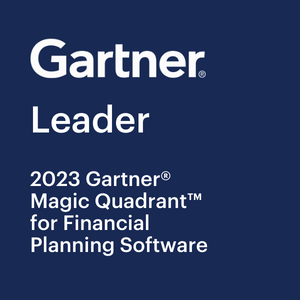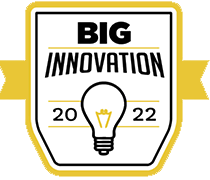Make better decisions faster with CCH Tagetik
New products, promotions, seasonality, inflation, competition — no matter what you’re planning for or reacting to, CCH Tagetik Budgeting, Planning, and Forecasting software gives you the power to plan more often, more in-depth.
See the bigger picture by bringing unlimited dimensions of financial and operational information together. Align departments by housing all plans, planners, and performance data under one roof. Use AI-based predictive analytics to improve the accuracy and impact of your forecasts. Do all this and more, faster than ever, by planning on our high-power data processing engine.
3 reasons why CCH Tagetik Budgeting, Planning & Forecasting software
lets you focus on your business
See CCH® Tagetik Budgeting, Planning and Forecasting in action
-
Rabobank
-
Galeries Lafayette
-
Victorinox
-
Stella International
-
Prada
-
OCLC
-
Raiffeisen Bank
Optimizing financial management: Rabobank's game-changing partnership with CCH® Tagetik
Optimizing budgeting processes and streamlining operations: Galeries Lafayette's strategic partnership with CCH® Tagetik
Victorinox’s journey from excel files to efficiency with CCH® Tagetik
Driving change: The digital transformation story of Stella International
Prada gained efficiencies with CCH® Tagetik’s unified platform
Continuous planning software that connects planners enterprise-wide
By connecting all financial and operational data, planning processes, and departments, CCH Tagetik extends AI-based xP&A functionality to all planners in your enterprise.
- Get real-time visibility with intuitive dashboards
- Planning for every industry and all departments
- Plan any way using unlimited dimensions and any time horizon
- Know your cash position with direct cash flow planning
- Produce accurate rolling and AI-based predictive forecasts
Go beyond basic planning software functionality
CCH Tagetik Budgeting, Planning, and Forecasting software is boosted by our predictive analytics engine. Planners get the power to see the cross-functional impacts of plans, drill into profitability drivers, play out what-if scenarios, and produce accurate, multidimensional/non-linear forecasts.
- Speed up planning with built-in predictive intelligence
- Get granular using detailed driver-based planning
- Fine-tune costs with a powerful allocation engine
- Be process-driven with our workflow and audit logs
- Produce real-time what-if analysis and simulations
Budgeting, Planning & Forecasting resources
About Budgeting, Planning, and Forecasting
-
Budgeting places controls and parameters around financial resources
Budgeting is the process of different departments coming together to estimate revenue and set expense limits for a period of time. The goal is to establish and unify commonly understood targets. The budgeting process involves evaluating resources, prioritizing objectives and analyzing the difference between objectives and outcomes.
The purpose of budgeting is:
- To plan: The operational budget begins with establishing and combining the objectives and identifying resources in order to create a plan for subsequent activities.
- To communicate: The budget should be communicated throughout an organization and be reflective the objectives of each department.
- To control spending: Budgeting determines the allowable spending limits for departments, projects, CAPEX, and OPEX.
- To coordinate: Budgeting coordinates and unifies all departments and business units to higher level goals.
The master budget is composed of three distinct components:
- Operational budgets: These define the positive and negative components of income and the related financial implications that result in the development of action plans.
- Budget of investments: The budget of investments allows budgeters to quantify the effort needed to adapt an item to company structure. It also defines the need of financial resources that contribute to the final structure of the state assets quote.
- Summary reports: These include the cash budget, cash flow forecast, forecast and loss account balance sheet forecast. In addition, they require budgeters to combine the estimated revenue and cost, entry and exit, a verification summary of the resulting income, financial, and capital action plans.
-
Forecasting is a powerful planning tool, especially when powered by predictive technology
Forecasting, often found alongside budgeting and planning processes, uses past and present data, trend analysis, and executive insight to predict the future state of any given metric. -
There are three types of forecasting
- Qualitative: Like market research (based on focus groups and interviews) or the delphi method (collection of expert opinions).
- Time series analysis and projection: Like analyzing historical data, trend projections, Box Jenkins, or X-11.
- Causal models: Like the regression model, econometric model, input-output model, and life cycle analysis.
Like the weather, financial forecasting isn’t an exact science and indicating uncertainty in forecasts is common practice. Access to accurate historical and real-time data greatly improves the accuracy of forecasts. In addition, the ability to combine rolling forecasts, long-range forecasts, scenario playing, and stress test events helps bolster forecast findings and makes forecasts more agile and responsive to business, economic, or KPI change.
-
Strategic planning aligns entire organizations around a core mission
Strategic planning sets out what your organization needs to pursue over the next three to five years to achieve its mission. The strategic plan itself is an analytic and comprehensive guideline that executive management creates to align the organization around its core mission. So that everyone works toward common goals, the strategic plan lays out high-level objectives, the actions needed to achieve those objectives, and the desired results. To create a strategic plan, your company must assess its market position, strengths, weaknesses, and areas of desired growth. -
Operational planning sets out tactical planning processes
An operational plan breaks down how divisions, departments, or cost centers intend to achieve the strategic plan. The operational plan is much more tangible, granular, and action-oriented than the strategic plan. It sets out the goals on a lower level and then lays out the blueprint for achieving those goals. Then it defines how activities and resources — human, physical, and financial — will support the broader strategic objectives. Some examples of operational plans could include sales planning, capacity planning, and inventory planning.
Operational planning best practices: Like strategic planning, there's no single way to create an operational plan. Generally speaking, operational plans contain specific strategies, objectives, activities, timelines, and metrics.
At its most basic, financial planning and analysis is the process of creating a company’s long term financial strategy based on its strategic goals and through an analysis of assets, liabilities, expenses, and income. Often, it involves forecasting financial realities and analyzing long term objectives from a financial point of view specifically to ensure that those are objectives are viable and within the scope of the financial reality.
-
All businesses must hone financial planning and analysis
At its most basic, financial planning and analysis is the process of creating a company’s long term financial strategy based on its strategic goals and through an analysis of assets, liabilities, expenses, and income. Often, it involves forecasting financial realities and analyzing long term objectives from a financial point of view specifically to ensure that those are objectives are viable and within the scope of the financial reality. -
Balance sheet forecasts are critical to understand working capital
Balance sheet forecasts are also called the ‘balance sheet projection.’ It is a forecast of the predicted financial condition of a business at a certain point in the future, based on the balance sheet. Within it, forecasts for liquidity, cash flows, solvency, equity and working capital can be obtained and assessed. The balance sheet forecast is especially valuable because of its ability to forecast working capital. By understanding how working capital is going to look in the future, executives can take action to improve cash flow. The balance sheet often serves as a basis for subsequent forecasts and is also used by prospective investors who are deciding whether or not to invest as a way to mitigate their risk. -
Some enterprises will also find ICT budgeting critical
ICT (Information Communications and Technology) budgeting is the operating budget used by companies in the information and communications technology industry. It includes allocated amounts for communication devices, including radio, television, mobile phones, computers, software, satellite systems, video conferencing, and distance learning. -
Planning, budgeting, and forecasting software facilitates all kinds of planning across enterprises
For enterprises, planning, budgeting, and forecasting software brings all data relevant to planning into one software system. The manually generated spreadsheets that traditionally support planning are not sophisticated enough to support the large-scale data needs of enterprises. Software is the only way that complex, often global, companies, can determine departmental budgets, allocate costs, and create plans that work towards strategic goals. Planning, budgeting, and forecasting software integrates data sources from multiple departments and makes it available for planners. This way, departments can see how plans or outcomes from one department impact the plans and outcomes in another. For example, how the quarterly sales forecast will impact finance’s revenue forecast.
Modernized approaches to planning, budgeting, and forecasting software, like integrated business planning (IBP) and eXtended planning and analysis (xP&A) take traditional enterprise planning methods to the next level. In essence, they give planners from all domains, such as workforce, sales, supply chain, and marketing departments, access to traditional financial planning and analysis tools — like scenario planning, simulations, cost allocation, modelling, rolling forecasts, and predictive analytics.






